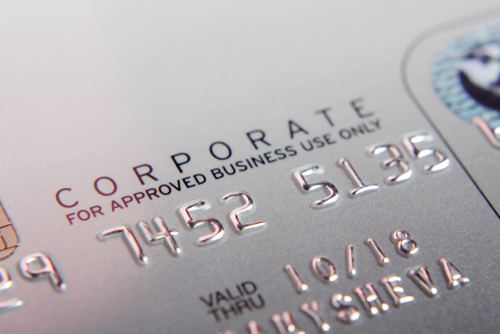

Summary
- Corporate debt has nearly doubled over the past eight years, leading people to worry that credit markets are vulnerable to rising rates and a recession.
- But companies have taken advantage of low rates to strengthen their credit profile and limit exposure to higher rates.
- Downgrades and defaults will certainly rise in a recession, but the surprise may be how muted that credit cycle is.
- The one corner vulnerable to rising rates is leveraged loans. These are mostly floating rate, and borrowers are in private equity realm.
This article is only available to Macro Hive subscribers. Sign-up to receive world-class macro analysis with a daily curated newsletter, podcast, original content from award-winning researchers, cross market strategy, equity insights, trade ideas, crypto flow frameworks, academic paper summaries, explanation and analysis of market-moving events, community investor chat room, and more.
Summary
- Corporate debt has nearly doubled over the past eight years, leading people to worry that credit markets are vulnerable to rising rates and a recession.
- But companies have taken advantage of low rates to strengthen their credit profile and limit exposure to higher rates.
- Downgrades and defaults will certainly rise in a recession, but the surprise may be how muted that credit cycle is.
- The one corner vulnerable to rising rates is leveraged loans. These are mostly floating rate, and borrowers are in private equity realm.
Market Implications
- Based on underlying credit fundamentals, we are comfortable being long corporate credit risk.
- But given we see the risk of recession as 70% in the coming year, we prefer to forgo current spreads in anticipation of being able to buy credit at substantially wider spreads.
Debt Has Been Rising
Interest rates are rising. The consensus view is that the Fed Funds rate will peak at 4%. Macro Hive’s contrarian view is that it could go as high as 8% if the Fed is serious about corralling inflation.
Some are concerned this spells trouble for the corporate bond market.
A big reason people worry is the explosion of corporate debt over the past decade. Nonfinancial debt for the S&P 500 grew 90% between yearend 2014 and 1H 2022, to $6.4tn (Chart 1). It rose from 20% of GDP to 25%. People also point to the rise of total nonfinancial corporate debt to 80% of GDP, from about 74% in 2014.

We put on our contrarian hat and suggest the pain may be less than conventional wisdom suggests. The reason is that companies took advantage of the low-rate environment of recent years to significantly improve their credit profile.
In this analysis, we focus on the nonfinancial sector of the S&P 500.
Leverage Has Been Stable
Leverage, whether measured by the debt/EBITDA ratio or debt/equity ratio, has mostly stayed within a narrow range (Charts 2 and 3). We present ratios for the total nonfinancial sector and ex real estate and energy because these sectors have been more volatile over time.
The debt/EBITDA ratio in particular has stayed near five even as debt outstanding grew. It climbed to 5.5 in 2019 when issuance surged. The Fed had raised its Fed Funds rate to 2.5%, and the 10-year Treasury rate was near 3%. Companies wanted to lock in low-cost debt before rates went higher even at the cost of a higher leverage ratio.

When Covid lockdowns hit in 2020, EBITDA shrank by 14% yoy, causing the debt/EBITDA ratio to spike to seven. Debt growth then flatlined until the ratio returned to five.
We see a similar profile with the debt/equity ratio. Companies built up a relatively large equity base after the financial crisis and were gradually returning to a historical normal ratio near one. When the pandemic led to losses and a smaller equity base, companies rebuilt their equity before adding more debt.
The key takeaway here is that the growth in debt was not willy-nilly; it was a disciplined process in the context of growth in EBITDA and equity.
We note that a major shock like the pandemic can disrupt that disciplined process too. We return to this point below.
Interest Coverage Ratios Are Up Sharply
Companies took advantage of low rates to sharply reduce the cost of outstanding debt. Between 2014 and 2022, the average cost of debt dropped from 3.6% to 2.4% (Chart 4). The EBITDA/interest expense ratio climbed from near six to over eight (Chart 5). Companies also extended debt maturities to lock in these low rates for as long as possible. Long-term debt went from 83% of total debt to 87%.

Given that most corporate debt is fixed rate, these benefits of low rates will persist and unwind only gradually even if rates remain well above pre-2022 levels indefinitely.
Corporate Balance Sheets Can Weather a Recession
Near term, rising interest rates alone will not be a problem for most companies. The problems will come later when they must refinance maturing debt.
The possible consequences of rising rates – recession or a major crisis – is another story.
In our view, companies are about as well positioned for a recession as they could be. Should there be a recession, there is little question leverage ratios will weaken. Some companies may have difficulty rolling over maturing debt. Credit downgrades and defaults will rise.
But the surprise may be how muted these consequences are compared with previous recessions when balance sheets were weaker.
As signs of deteriorating credit quality become more apparent, credit spreads will likely blow out in anticipation of worse to come, then quickly recover if we are correct about underlying quality. The challenge will be to get long credit spreads before that bounce-back rally.
But What About a Crisis?
The real question is how companies fare should there be a massive and sustained shock like the financial crisis. We got a hint of how quickly corporate prospects can evaporate and credit spreads react when Covid hit in early 2020. But fiscal and monetary shock and awe soon put an end to that selloff and triggered a sharp rally (Chart 6).
If (or rather when) there is another major crisis, credit markets are highly vulnerable. But then, so are most other risk assets.

What About High Yield?
This analysis has focused on S&P 500 companies, many of which are investment grade.
We have not done a similar analysis for high yield companies. But, of those active as high yield bond issuers, the trends and patterns we described above are broadly similar. The levels of leverage are, of course, higher, and interest coverage lower. But again, high yield companies have been disciplined about how they issue debt.
The one corner of the market vulnerable to rising rates is leveraged loans. These are mostly floating rate, and borrowers are largely in the realm of private equity. As interest expense rises, many of these companies will struggle. There is about $2tn of leveraged loans outstanding, of which a third is held by banks and two thirds by institutional investors, largely in the form of collateralized loan obligations (CLO). A more in-depth discussion of leveraged loans is beyond our scope here, but we note that this rather than corporate bonds is where problems will arise.
We Like Credit But…
Based on strong underlying fundamentals, we are comfortable with a hold in investment grade and high yield credit. There is risk of credit spread volatility should the recession scenario play out. Current credit spreads are sufficiently wide to compensate buy and hold investors for this volatility and potential defaults.
But we also think a recession is more likely than not. Macro Hive believes the risk of recession in the next year is 70% – admittedly higher than consensus, which is around 30%.
We prefer to forego the 490bp of credit spread in high yield and 140bp in investment grade for now in anticipation of being able to buy credit at substantially wider levels.
Investors can gain exposure to the corporate bond market through ETFs – LQD (investment grade), and JNK or HYG (high yield). We note that these ETF carry both credit and rate risk. Investors can hedge rate risk with interest rate swaps or inverse Treasury ETFs.
